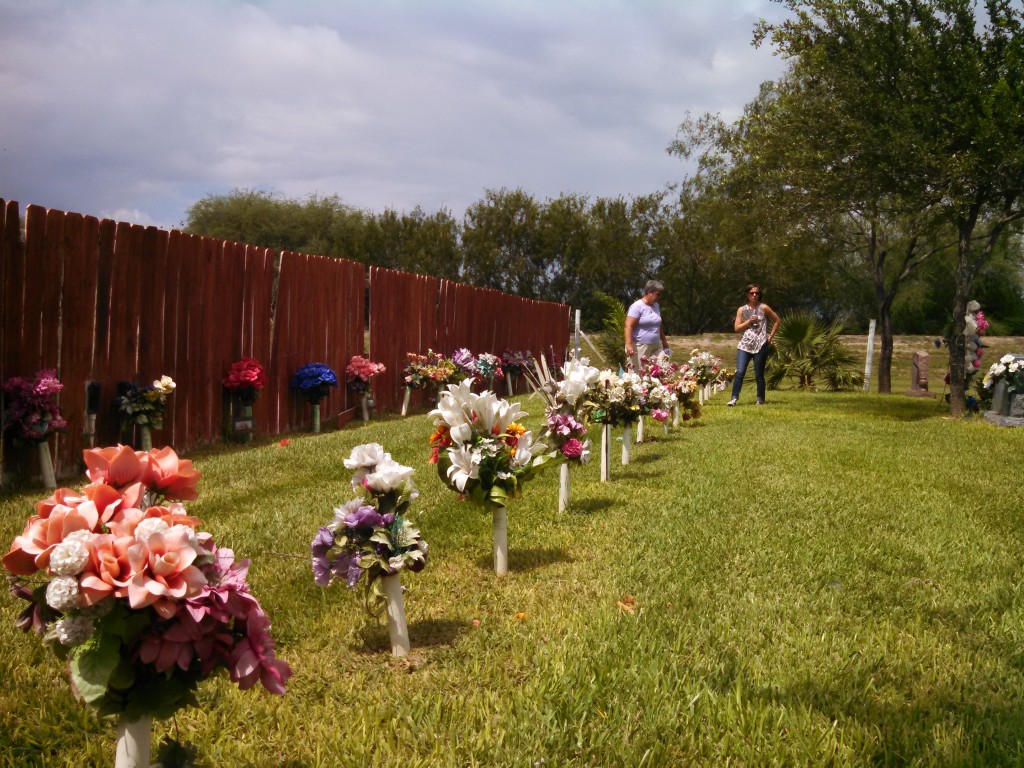Things are finally starting to take form in my brain. I’m learning my role at the STHRC, what I’m expected to do, and what gaps need to be filled. I’ve also found it difficult to answer the question “So what do you do?” to my friends and family who ask.
A quick answer to the question usually involves an extremely brief description of the humanitarian crisis happening on our border (“Wait, so kind of like what’s happening in the Mediterranean, but it’s only 6 hours away?!” Yes.) and then I explain that my role is to manage the incoming missing persons reports from families all over the world so that we can figure out how to best respond to each case. I’m also responsible for managing any and all data that is available on unidentified people that have perished in Brooks County. And then ultimately, I help create a system that allows the two sides to function efficiently so that unidentified people can be identified, providing closure for loved ones. Eddie refers to my position as a forensic investigator, and so that’s what I say I am.
But I don’t feel like that explanation really encompasses what I spend most of my time doing. In fact, it misses the skill that Eddie and Sister Pam find most important in our work; a skill, that, while emphasized to students pursuing careers in their field, is rarely fully understood by students (in my humble opinion…). That skill is building relationships. This process is often termed ‘networking’ or ‘collaborating’, but I think those terms miss the point that Eddie and Sister Pam are getting at. When Eddie and and Sister Pam network, they don’t simply mean saying “Hey, we should collaborate on this project together” through the phone or in a brief conversation after a meeting. They shake hands, call often, set up meetings with in-depth agendas, and most importantly, simply recognize each meeting as a human-to-human relationship. And so while my job description hits on this idea briefly, I feel like I spend most of my time building relationships, as part of STHRC, with so many people.
These past few weeks have been full of meetings. Some are large, some are with only a few people, but every single one is extremely meaningful and a step forward. Some are across the phone, some are across Skype, and some include simply showing up at someone’s office. But every meeting has a set agenda and has the intent of building trust and progress. We meet once a week on Skype with Derechos Humanos, a human rights group in Arizona that is focused on Search and Rescue efforts across the border. We share cases and build off of each other’s strengths and abilities. We’ve also met with Border Patrol to discuss ways to go about Search and Rescue missions, and ultimately to save lives. We continually meet with consulates, law enforcement, Justices of the Peace, and anyone else we can.
One of the best meetings I’ve ever been a part of happened yesterday while we were in McAllen with Dr. Kate Spradley. We decided to drop by a consulate’s office to introduce ourselves and let them know that we are all here to help in any way possible. We really didn’t know what to expect. The consulate quickly welcomed us in, and as soon as the meeting began, I realized how perfect a meeting this was. Eddie spoke on behalf of the families missing loved ones and was able to discuss efforts on search and rescues for people who had recently gone missing. I briefly talked about how I work with missing persons reports as well as unidentified people found on ranches. Dr. Spradley represented her lab and was able to affirm to the consulate the efforts made to identify those found on ranches. And Sister Pam, as she said, was there to provide spiritual support for all of us. Instantly, we all had each other’s trust. There we were, each one of us from a different perspective of this crisis, in McAllen, TX, in the consulate’s office to offer support and information. The consulate had so many of the same concerns we did, and was elated to know that all of the people she needed to help her with many of her issues as a consulate were sitting right there in her office, unannounced, voluntarily. These meetings can’t happen across the phone or email. This kind of trust can only be built face to face.

And so that’s what I do for the time being. I meet with people in person as much as possible with Eddie and Sister Pam. I email and call people from all over the country, trying to find ways to create a better system (it can always be better). I set up times to meet with people in person to have real discussions. And ultimately, as Eddie and Sister Pam put it, I build relationships and trust with people.
~Ryan